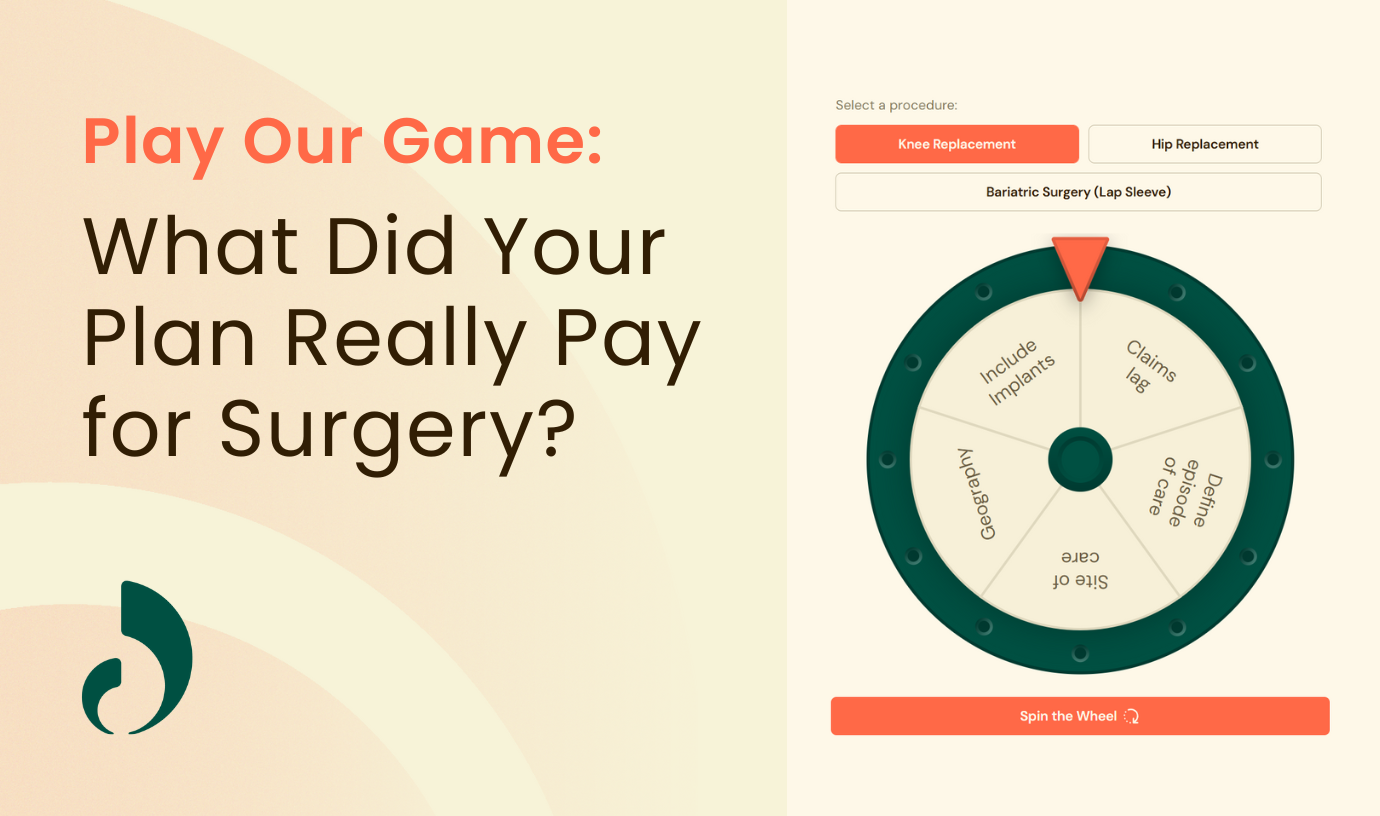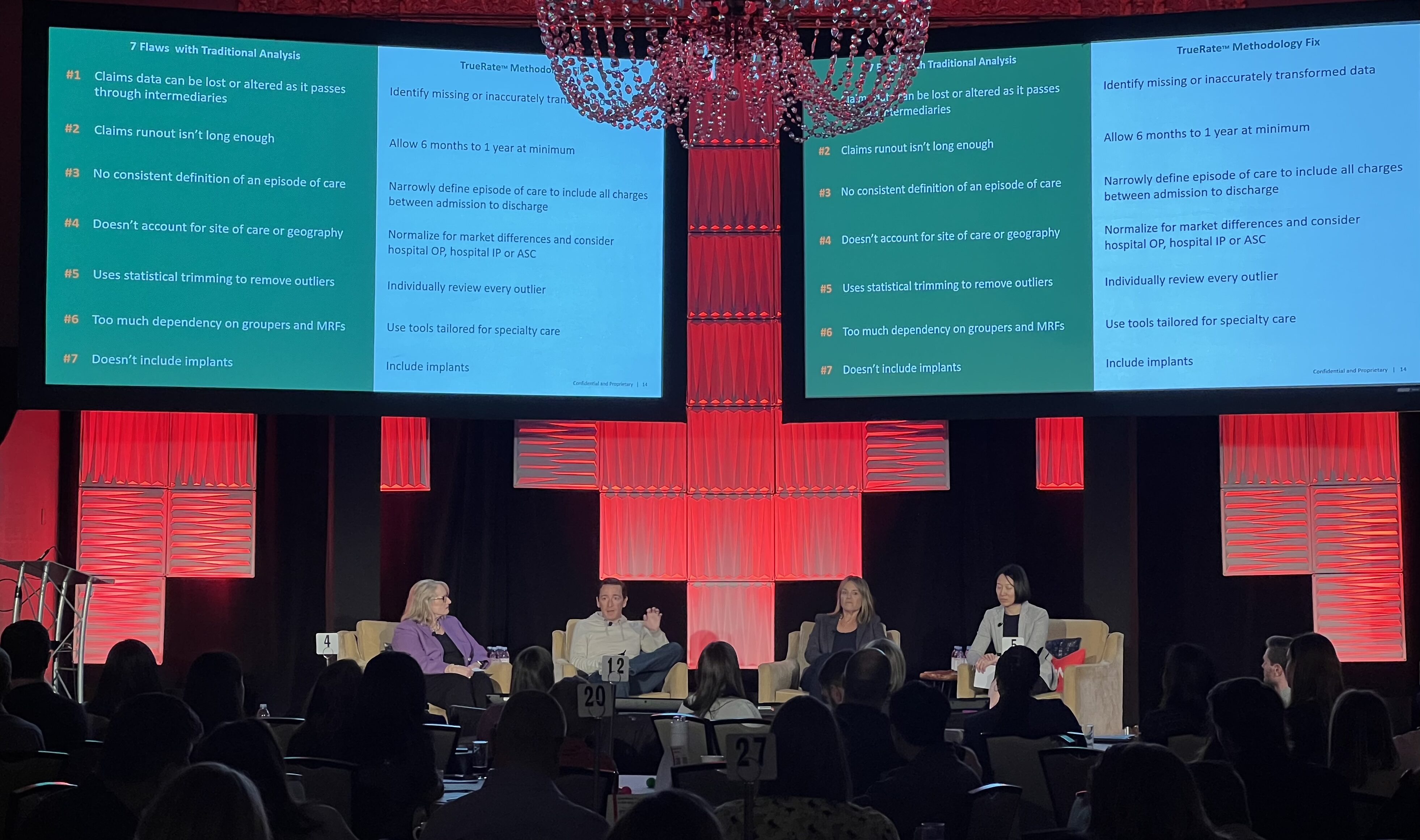Lantern recently released our TrueRate™ methodology, a comprehensive framework for accurately evaluating specialty care costs. Our CEO John Zutter and SVP of Consultant Relations Erin Tatar shared insights about this approach during the Aon North America Health Solutions Analytics and Actuarial Conference, highlighting why it matters for companies looking to manage their healthcare costs effectively—and make well-informed decisions to help lower those costs.
Identifying Top Drivers of Healthcare Spend
In the ongoing conversation about the increase in healthcare costs, specialty care as a category hasn’t been in the spotlight. But specialty care—those high-cost, low-frequency procedures like joint replacements, spine surgeries and cancer treatments—represents about 50% of total healthcare spend and is growing faster than overall healthcare trend.
As Zutter explained during the panel, “Healthcare costs are out of control. Specialty care is the number one component of that representing about 50% of it and it’s growing faster than average.”
Why Traditional Analysis Falls Short
One challenge consultants and benefits leaders run into when trying to get a full picture of their specialty care spend? Measuring the true cost of specialty care is more complex than it appears.
During the session, our team highlighted several reasons why traditional claims analysis often misses the mark:
- Missing components: “What do you call a knee replacement without an implant?” Zutter asked the audience. “An amputation.” While that quip may sound like a line from a very healthcare focused stand-up routine, implant costs are often missing from claims analyses, throwing off calculations by thousands of dollars.
- Data transmission errors: Claims pass through multiple systems before reaching your data warehouse, and each transition creates opportunities for errors.
- Incomplete episodes: Standard groupers and analytics tools were designed for population health management, not surgical episode analysis. If you’re using a grouper, chances are, you’re not getting a complete picture.
In one eye-opening example shared during the panel, a client’s data appeared to show a hospital charging negative $40,000 for knee replacements. The culprit? A claims reversal where the negative amount appeared in the dataset, but the corresponding positive charge didn’t.
“We had to ask the question, do you think the hospital is paying you to get knee replacements?” said Zutter. “It’s a data problem.”
The Open-Source Solution
Rather than keeping our methodology proprietary, Lantern has taken the unusual step of making it completely open source. Our 140-page report details exactly how we analyze specialty care episodes to ensure accuracy and consistency.
“We want to give everyone an easy button to hold us and our peers and the industry accountable,” Zutter said. “If we’re on a level playing field, then I think that’s a place where people make good decisions.”
The methodology is already being integrated into popular benefits analytics platforms and data warehouses.
Get a clearer picture of healthcare spend
Lantern’s comprehensive savings methodology can help you fill in the gaps and find the information you need to make informed decisions. Download the analysis now.
Why This Matters for Your Company
For benefits leaders, the implications are clear: you need accurate data to make strategic decisions about where to invest limited resources.
“If the tools tell you things cost less than they actually do, you might make decisions or recommendations to your clients to focus on different areas,” said Zutter. “We want to make your lives easy so your clients can make the best decisions they can.”
The potential impact is substantial. A properly designed specialty care strategy can shave 3-4% off total healthcare trend with a purely voluntary program—and potentially double that with some mandatory procedure coverage.
What’s Next?
If you’re interested in learning more about our True Rate methodology or understanding the potential savings opportunity for your organization, we’d love to connect. Download the full report and get in touch with us.
“If the tools tell you things cost less than they actually do, you might make decisions or recommendations to your clients to focus on different areas. We want to make your lives easy so your clients can make the best decisions they can.”




